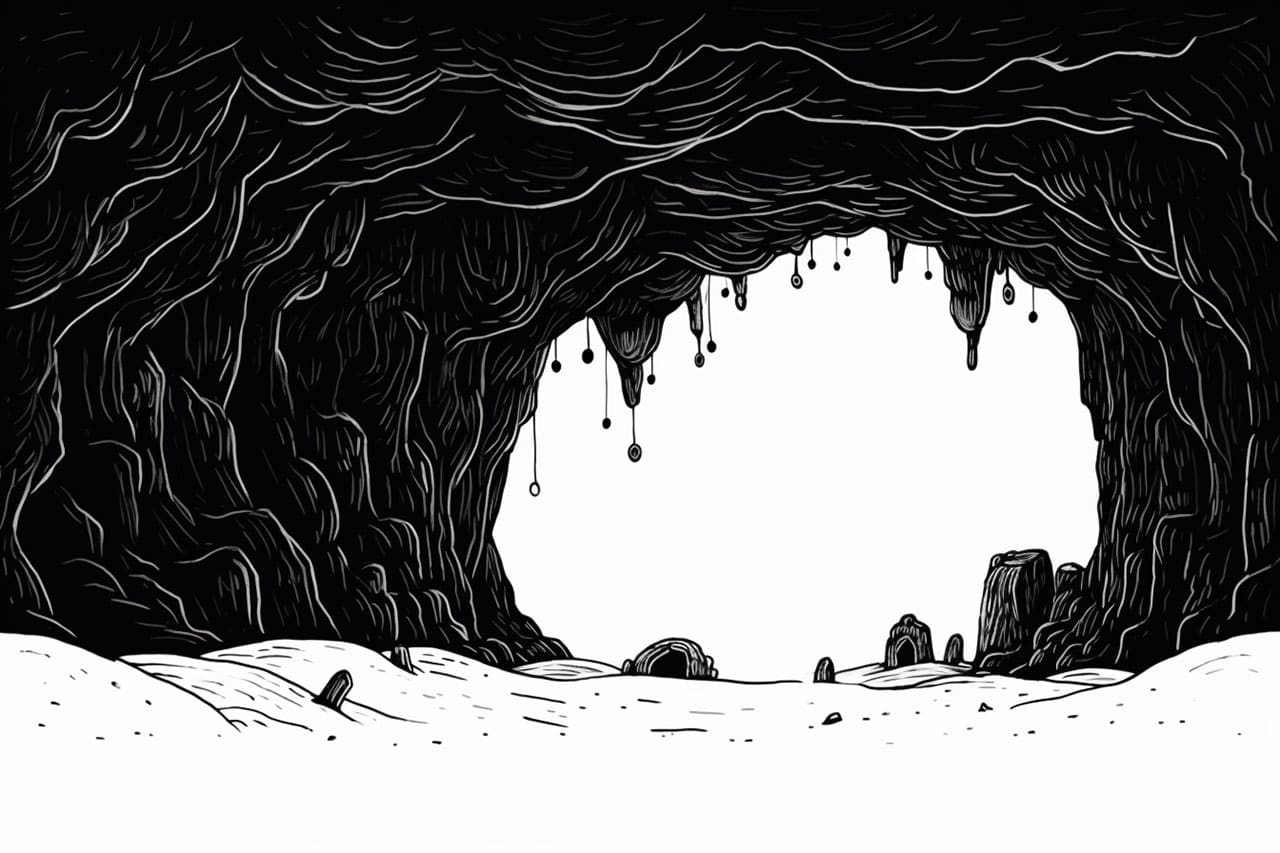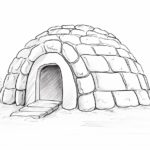
Drawing a cave can be an exhilarating artistic journey, whether you’re an established artist looking to try something new or a beginner eager to explore the world of drawing. Caves are intriguing natural formations, filled with a sense of mystery and adventure. Their rugged textures and unique shapes present an exciting challenge that can help you develop your skills and ignite your creativity.
As you set out to create a cave drawing, you’ll find that capturing its essence is not only about replicating shapes but also about conveying the atmospheric qualities that make caves so captivating. From the interplay of light and shadow to the intricate details of rock formations, this step-by-step guide will take you through the whole process, ensuring that you understand every aspect of cave drawing.
To ensure you have a smooth and enjoyable experience, gather your drawing materials and prepare to immerse yourself in the art of cave creation. Let your imagination and instincts guide you as we embark on this artistic adventure together. So, let’s dive in and start our journey into the enchanting world of cave drawing!
Materials Required
Before we begin, make sure you have the following materials on hand:
- Drawing paper or sketchbook
- Pencils (HB or 2B for sketching, and various grades for shading)
- Eraser
- Blending stump or cotton swabs (optional)
- Charcoal or graphite sticks (optional for additional texture)
Now that you have all your materials ready, let’s dive into drawing a cave!
Step 1: Basic Outline
Start by lightly sketching the basic outline of the cave on your paper. You can create an irregular shape with curves and jagged edges to give it a natural and organic look. Keep in mind that caves tend to have an asymmetrical shape with uneven walls and openings.
Step 2: Entrance and Opening
Next, focus on the entrance and opening of the cave. Draw a smaller, narrower opening, and then expand it gradually to create the larger cave entrance. Pay attention to the direction and shape of the rocks around the opening. Add some texture and irregularities to make it more realistic.
Step 3: Interior Walls
Now, let’s add some depth to the cave by drawing the interior walls. Start by sketching the outline of the walls, keeping in mind the perspective. The lines should converge towards a vanishing point to create the illusion of depth. Make the walls jagged and uneven to create a rough texture.
Step 4: Stalactites and Stalagmites
Caves are often adorned with stalactites (hanging from the ceiling) and stalagmites (rising from the floor). These formations add interest and detail to your cave drawing. Sketch long, thin, and tapering lines downwards from the cave ceiling to represent stalactites. For stalagmites, draw shorter, wider, and tapering lines upwards from the cave floor. Vary their sizes and shapes to create a natural look.
Step 5: Shadows and Shading
To give your cave drawing dimension and depth, add shadows and shading. Identify a light source in your drawing, and imagine where the shadows would fall. Use different grades of pencils to create various tones and values. Apply light shading to the areas that are less exposed to light, and darker shading to the recessed areas and corners.
Step 6: Adding Texture
To make your cave drawing more realistic, add texture to the walls, rocks, and formations. You can achieve this by lightly shading with a pencil or using a blending stump or cotton swabs to create a soft and blended effect. Experiment with different techniques, such as stippling or cross-hatching, to create the desired texture.
Step 7: Details and Finishing Touches
Now it’s time to add some final details and finishing touches to your cave drawing. Pay attention to the smaller elements, such as rocks, cracks, and crevices. Enhance the texture and depth by adding extra shading or highlights. Don’t be afraid to experiment and let your imagination guide you in adding unique features to make your cave drawing truly one-of-a-kind.
Conclusion
Drawing a cave can be an exciting and creative endeavor. By following these step-by-step instructions, you can capture the mysterious and captivating atmosphere of a cave on paper. Remember to start with a basic outline, add depth and texture, and finish with attention to details. With practice and patience, you’ll be able to create stunning cave drawings that transport viewers into a whole new world. So, grab your drawing materials and let your artistic skills shine as you embark on this cave-drawing journey!
Fun Facts About Caves
- Caves are natural underground spaces large enough for a human to enter—some have complex systems that extend for miles.
- Stalactites and stalagmites are common formations in caves, created by mineral deposits from dripping water over thousands of years.
- The world’s longest cave system is the Mammoth Cave in Kentucky, USA, stretching over 400 miles (640 kilometers) in explored length.
- Caves provide unique ecosystems, hosting creatures adapted to total darkness, such as blind fish and glow worms.
- Some caves maintain a constant temperature year-round, making them natural refrigerators or climate-controlled shelters.
- Many prehistoric cave paintings found around the world offer insights into early human life and beliefs.
- Caves can be formed through various processes, including volcanic activity, erosion by water, or the action of microorganisms.
- Ice caves, which form in or under glaciers, offer stunning views with their dazzling blue ice formations.
- Cave diving is a challenging adventure sport that involves exploring underwater cave systems—requiring specialized equipment and training.
- The study of caves and their ecosystems is known as speleology and can provide valuable geological and environmental insights.
Suggestions for Scenes and Settings for Cave Drawings
- Crystal Cavern: Draw an enchanting cave filled with glittering crystals of various colors, casting reflections on the cave walls.
- Subterranean River: Illustrate a cave scene where a gentle river flows through, reflecting stalactites hanging from the ceiling.
- Ancient Cave Art: Create a historical setting with cave walls adorned with petroglyphs and ancient paintings illuminated by torchlight.
- Ice Cave Adventure: Show a mesmerizing ice cave with translucent walls and delicate ice formations, explorers hiking in awe.
- Bat Habitat: Depict a lively cave scene with bats hanging from the ceiling in clusters and a few taking flight, casting shadows.
- Lava Cave Excursion: Imagine a cave formed by ancient volcanic activity, with dark lava tunnels and traces of old flows.
- Mystical Cavern: Construct a fantasy cave filled with glowing fungi and mythical creatures hiding in the shadows.
- Underwater Cave: Design a submerged cave scene with divers navigating between unique rock formations and colorful sea life.
- Archaeological Discovery: Illustrate explorers uncovering the entrance to a cave filled with forgotten artifacts and strange markings.
- Enchanted Treasure Cave: Picture a scene with adventurers discovering a hidden treasure trove guarded by stalagmite sentinels.









